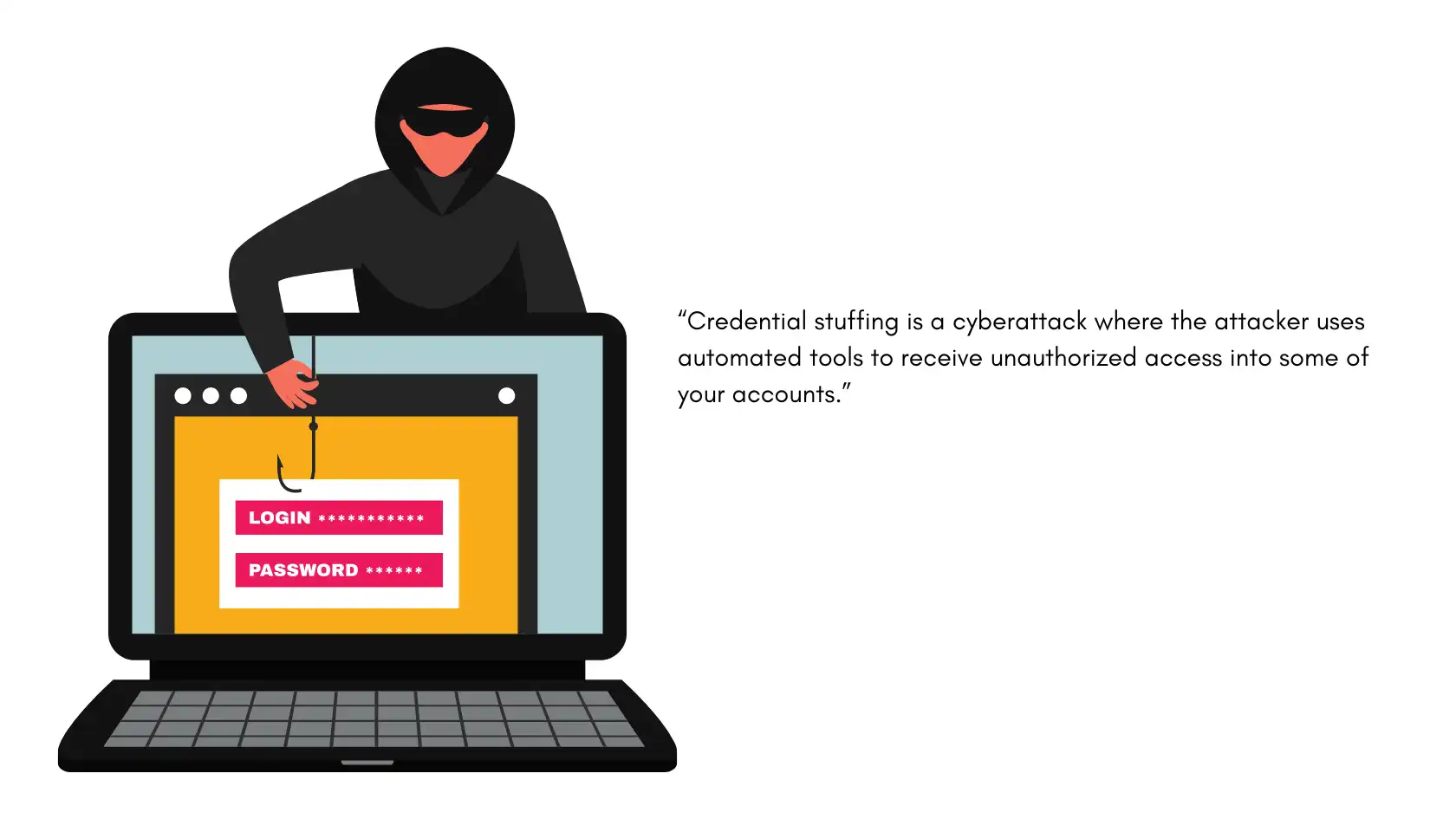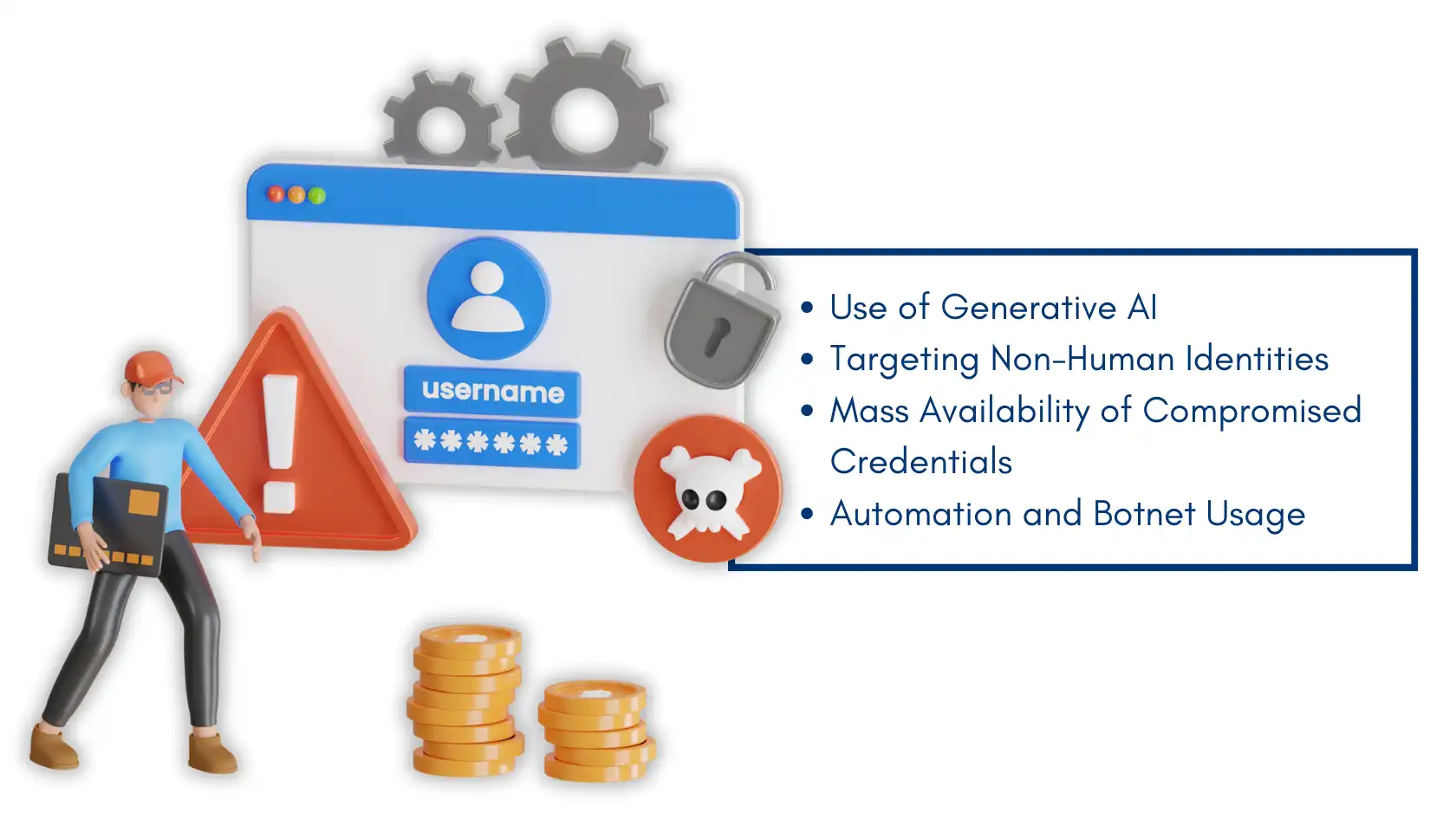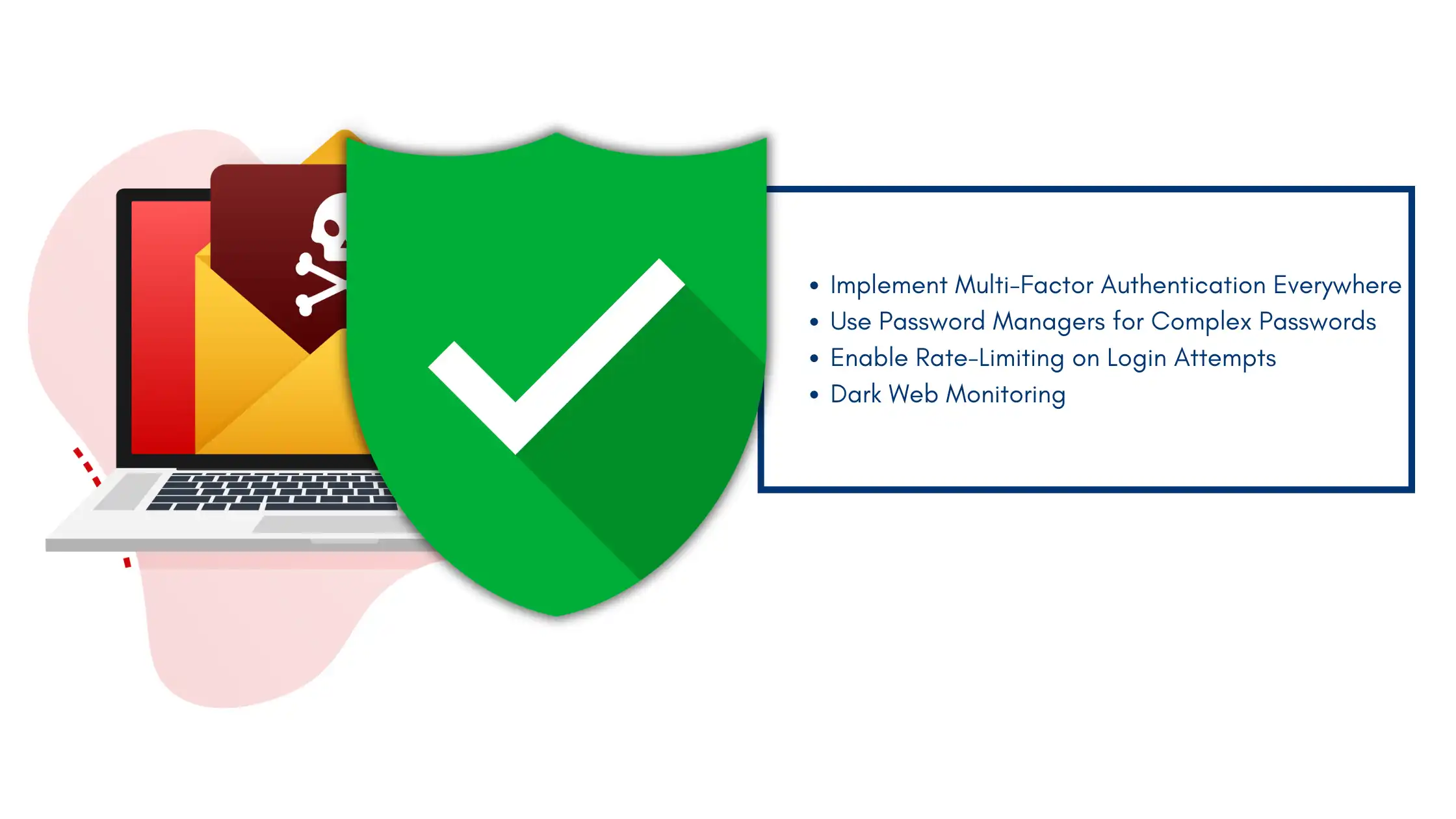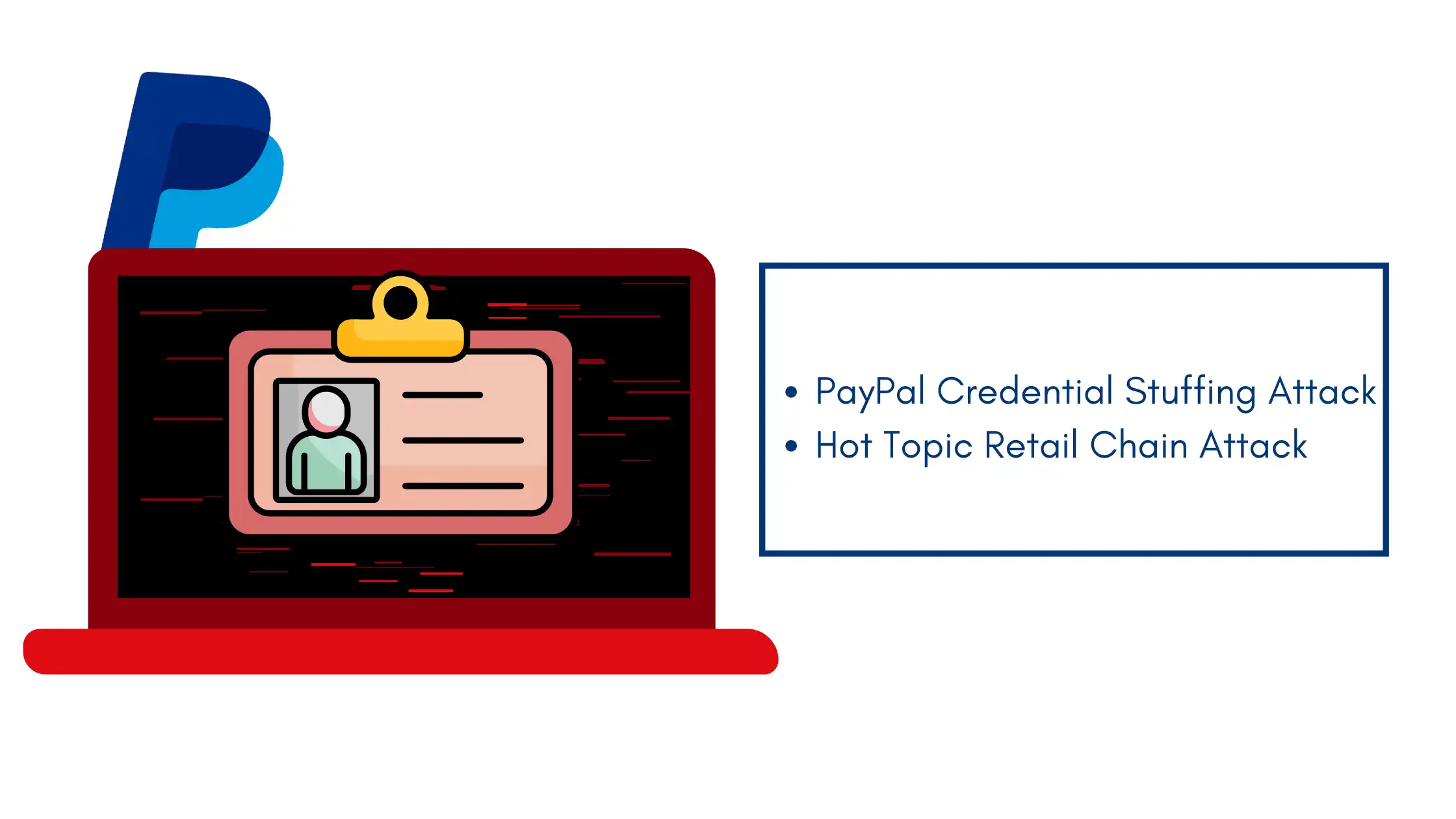How To Stay Safe From Credential Stuffing Attacks?” It is a question we all ask.
In this digital era where we have got passwords for everything from our Netflix accounts to our bank apps, the thought of someone cracking into them all is pretty scary, right?
We have been in the cybersecurity game for a while now and let us tell you, credential stuffing attacks are like the sneaky pickpockets of the internet world.
These clever hackers take a bunch of stolen usernames and passwords from one site and try them on a bunch of others.
And you know what? Sometimes they hit the jackpot, all because we tend to use the same password everywhere.
But don’t worry, we are not here to make you feel bad about your “password123” days.
We are here to help you lock down your digital life tighter than Fort Knox. Stick with us, because we are about to dive into how to prevent credential stuffing attacks and the world of credential stuffing defense. Let us get started then.
What Is a Credential Stuffing Attack?


- Lightning-fast speeds to browse without lag
- Servers in 105+ countries around the globe
- Military-grade security to stay safe online
- Try it risk-free with its money-back guarantee
- Native apps for all major devices
Credential stuffing is a cyberattack where the attacker uses automated tools to gain unauthorized access to some of your accounts.
They do this by automatically entering thousands of username-password pairs.
Usually, they come into possession of credential dumps from past breaches where user login information was leaked.
This obviously depends on users who are reusing the same passwords from other sites.
Implementing effective credential stuffing prevention measures is crucial to safeguard your accounts.
How Credential Stuffing Works
Understanding how credential stuffing works can help you a lot to protect your online accounts and prevent any unauthorized access.
Implementing strong security measures is essential to protect against credential stuffing attacks that exploit common vulnerabilities.
Data Collection
Attackers secure a very big set of breached login credentials from data breaches. Sometimes these databases are sold on the dark web or shared between thieves.
Automation
With the stolen credentials, they attempt to log in on different websites. Also with automation they are able to very quickly test thousands or even millions of username and password combinations across any number sites.
Successful Logins
Attackers would then be able to gain access and log in with the user’s account if those users re-use the same credentials across other sites.
To protect yourself against these cyber threats, after they have slipped in, that can mean catching sensitive data or outright stealing the owner’s crypto. They can even lock the legitimate users out of their own accounts.
Monetization
The second step the attackers will do is either sell these accounts on the dark web to get more profit than they gained on selling of their emails or use their compromised account for another spamming attack like other types of this Nigerian scam using phishing email or financial fraud etc.
Key Characteristics of Credential Stuffing Attacks
Knowing the critical aspects of credential stuffing assaults will help in realizing the preventive measures to shield yourself from it and protect against credential stuffing.
High Volume
Credential stuffing is simply a type of one-to-many automated login attempt where the attacker has used breached credential pairs.
It is only the number of tries that sets credential stuffing apart from other types of account takeover attack like phishing or a brute force attack.
Automation
Credential stuffing is dependent on the use of bots to automate these login attempts. These bots are so complex that they circumvent CAPTCHA systems which rotate through IP addresses to avoid detection and make the kinds of moves a real user might like scrolling down.
Exploitation of Reused Passwords
Attackers would then be able to gain access and log in with the user’s account if those users re-use the same credentials across other sites.
To avoid this, do not repeat your passwords on different sites and use a hardy password. After they have slipped in, that can mean catching sensitive data or outright stealing the owner’s crypto. They can even lock the legitimate users out of their own accounts.
Impact of Credential Stuffing Attacks
Understanding the impact of the credential stuffing is also important for developing solid defenses against this threat.
Financial Losses
Once the attackers have rights on an account, they can do unauthorized transactions or even violate money from the user accounts by buying freebies.
Ripple effects can be especially harsh in the case of financial accounts, which is why it’s crucial to understand how to prevent credential stuffing attack.
Data Breaches
Once compromised, the attackers are able to access valuable personal information found within accounts and it can lead you right into more identity theft or fraud.
Which can include your customers’ data being breached, which translates into fines and loss of faith from the regulation govering bodies.
Reputation Damage
Credential stuffing impacts on vulnerable targets. If organizations come under attack from credential stuffing and customer accounts are compromised as a result.
Then this can lead to damage to the reputation of that organization thereby reducing confidence in their services which may ultimately result in loss of business.
Operational Disruption
Investigating the breach, resetting any breached accounts and increasing security will likely eat into time that would otherwise go toward operations within your business.
Evolving Techniques of Credential Stuffing Attacks

Credential stuffing attacks have come a long way and with new methods. What is a credential stuffing attack?
These attacks continue to pose greater threats that are quite challenging to detect. Here are some of the latest ways these attacks are happening:
Use of Generative AI
Attackers use AI tooling to craft highly sophisticated scripts that allow credential stuffing.
AI is able to produce code that hides the expected brute-force attack pattern which makes them more difficult to find. This has reduced the technical bar to where even unskilled attackers can mount competent attacks.
Targeting Non-Human Identities
Attackers are now targeting non-human identities such as API keys and service accounts, not just user accounts. Often these targets are high value ones with elevated privileges.
If compromised, these IDs will give attackers access to essentially bypass traditional authentication and authorization mechanisms which allows a breach far beyond what is strictly necessary.
Mass Availability of Compromised Credentials
With so many breached username and password combinations that are available online, it is simpler for an attacker to use this data in large-scale credential stuffing attacks.
These datasets, which are usually obtained from past breaches over the years, allow an attacker to target large numbers of specific accounts across multiple platforms throughout all of your base, amplifying the impact of credential stuffing attack on your organization.
Exploitation of Weak Password Practices
Despite the awareness, many users still seem to insist on re-using passwords across different sites.
They will then use these in attempts to log into accounts that use the credentials from one breach on other sites.
This problem is compounded by continued use of poor or easy to brute force passwords.
Automation and Botnet Usage
Credential stuffing attacks are highly automated that is why it is often use botnets to distribute the attack across multiple IP addresses which makes it difficult for simple rate-limiting measures to detect and stop the attack.
An attackers can now scale their operations by using such distributed methods and easily overcome the target system.
Credential stuffing is being actively developed which means that organizations also need to review their security strategies continuously to safeguard against these fast-growing threats.

Uninterrupted, high-speed browsing, zero logs so your online activity is always private.
Over 7000 people checked out NordVPN in the last month
Advanced Strategies To Protect Against Credential Stuffing Attacks

Here are the advanced strategies to avoid the new types of credential stuff attacks:
Implement Multi-Factor Authentication Everywhere
MFA provides an extra layer of security, making sure that even if your password is somehow compromised, which happens all the time, you are still protected by requiring other forms of verification such as a one-time code sent to your phone or biometric authentication.
Understanding how to prevent credential stuffing attack is crucial, as it adds another line of defense.
Use Password Managers for Complex Passwords
A password manager will create and store strong and unique passwords for every account you have which reduce down on reused credentials. As a result, it is virtually impossible for attacks to launch attacks with credentials they obtained from elsewhere.
Monitor Your Accounts Regularly
Keep an eye on all of your account activity for unfamiliar Logins or Transactions. Create notifications on Logins from new devices or locations. Early detection is in order to react more quickly and before serious harm is done.
Enable Rate-Limiting on Login Attempts
If you maintain websites or systems, then rate limiting can have been put in place to delay or deny automatic login attempts causing a bot more difficulty whipping your pages of details. Along with CAPTCHA, this can also be a powerful defense in how to prevent credential stuffing attacks.
Employ Behavioral Analytics
These tools monitor things like login patterns and raise alerts when they detect behavior that differs from the normal. Those sorts of tools could find anything that smells a bit off and can either block it or escalate to response even in the case where valid credentials are entered.
Dark Web Monitoring
Use a service that alerts you if your username and password turned up on the dark web. You will be notified if any of your credentials have been found so that you can change the passwords now and prevent exploitation.
Regularly Update Your Software and Devices
This will guarantee that your systems, apps, and devices are up to date with their latest security patches. Since a great number of attacks leverage security gaps within older software, remaining current is an important part of defense in how to prevent credential stuffing attack.
Educate Yourself and Others
Understand the phishing strategies and other social engineering attacks to avoid unauthorized credential stuffing. Knowing about these threats can help you, your team or even family avoid being vulnerable to them.
Using these strategies in combination with one another will ultimately help to lower the likelihood that you fall prey to a credential stuffing attack.
High-Profile Credential Stuffing Attacks

Credential stuffing attacks have been behind a number of prominent data breaches, underscoring the increasing danger and complexity associated with these types of threats:
PayPal Credential Stuffing Attack (January 2023)
A credential stuffing attack late in 2022 reportedly compromised over 35,000 PayPal accounts.
The criminals used automated bots and tested lists of usernames and passwords from a past number of data breaches.
The breach uncovered personal data, spanning everything from names and social security numbers to transaction histories.
Although PayPal was able to address the attack by resetting passwords for compromised accounts and instructing users in credential stuffing prevention methods, such as enabling multi-factor authentication.
Hot Topic Retail Chain Attack (February to June 2023)
The American apparel retailer Hot Topic experienced a wave of credential stuffing attacks over several months, where unauthorized parties gained access to customer accounts using stolen credentials.
This information could have been related to users’ names, email addresses and parts of the payment card details which were utilized during one or a few bookings.
Hot Topic began encrypting users passwords going forward, had its IT team change security algorithms and notified affected customers.
The recent cybercriminal events underline the need for never using the same password for multiple services, following credential stuffing prevention best practices, making sure to have second-factor authentication in place, and most importantly, checking your accounts for any unauthorized access.
FAQs
How do you defend against credential stuffing attacks?
Defending against credential stuffing attacks involves using a combination of security measures. Start with multi-factor authentication to add an extra layer of security beyond passwords. Regularly monitor account activity for anny unusual login attempts and implement rate-limiting to slow down or block automated login attempts.
What can credential stuffing be largely prevented by?
Credential stuffing can be largely prevented by using multi-factor authentication. MFA requires you to verify your identity with a second factor like a code sent to your phone which makes it much harder for attackers to gain access even if they have valid login credentials.
What are some other ways of defending against a credential harvesting attack?
To defend against credential harvesting, use anti-phishing tools to block fake websites that attempt to steal login information. Also implement password policies that require complex, unique passwords and also encourage you to update them regularly.
How can we protect against credential theft?
You can protect yourself against credential theft by using password managers to create and store strong, unique passwords for each account. Make sure that software and systems are up to date with the latest security patches to close any weaknesses. Enable MFA across all important accounts and educate users on avoiding phishing scams that could lead to stolen credentials.
What feature prevents credential stuffing spraying attacks?
Rate limiting and CAPTCHA features are effective in preventing credential stuffing and spraying attacks. These tools limit the number of login attempts from a single IP address that automated scripts struggle to bypass and it reduces the potential of such attacks.
Conclusion
We have covered a lot of ground in our battle against credential stuffing.
From understanding how these sneaky attacks work to arming ourselves with the latest defense strategies, we’ve explored key ways to protect against credential stuffing.
But here is the thing, staying safe from credential stuffing is more like a never-ending game of digital cat and mouse. But with the tools and knowledge we have shared, you are now the cat with some seriously sharp claws.
So, the next time you are logging into your favorite shopping site or checking your email, take a moment to appreciate your newfound security savvy. After all, in this connected world, we are all in this together. Stay safe out there and happy browsing.






